Abstract
Soil samples were collected from the surface (0 to 0.6 m) and phreatic (3.9 to 4.5 m) root systems of a Prosopis glandulosa woodland in the Sonoran Desert of southern California. P. glandulosa seedlings were inoculated with these soils, and rhizobia were isolated from nodules. The phreatic soil, characterized by constant moisture and temperature but low nutrient availability, favored slow-growing (SG) isolates as nodule occupants (85%). SG isolates from the surface and phreatic soil were distinct based on differences in colony morphology. Isolates from the surface soil, characterized by high nutrient availability and widely fluctuating water content and temperature, were equally represented by fast-growing and SG rhizobia. Most SG isolates (83%) had nodule relative efficiencies of <0.80, whereas 54% of the fast-growing isolates had relative efficiency values of >0.80.
Full text
PDF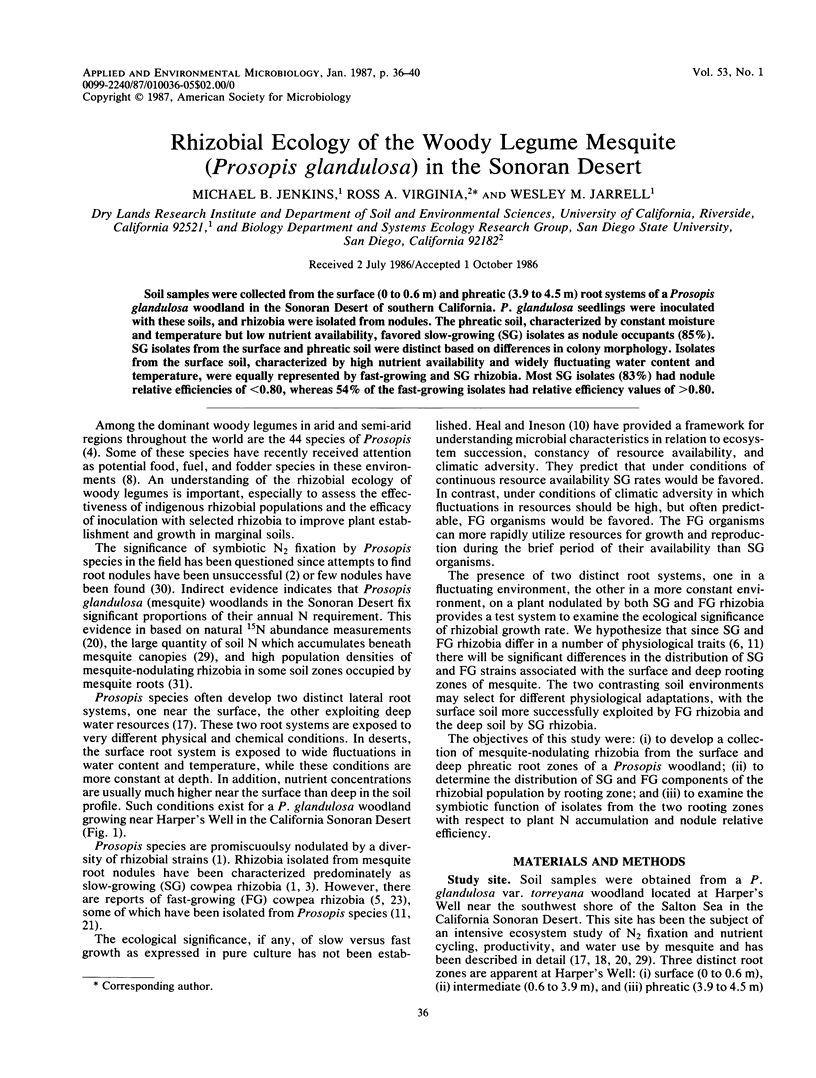
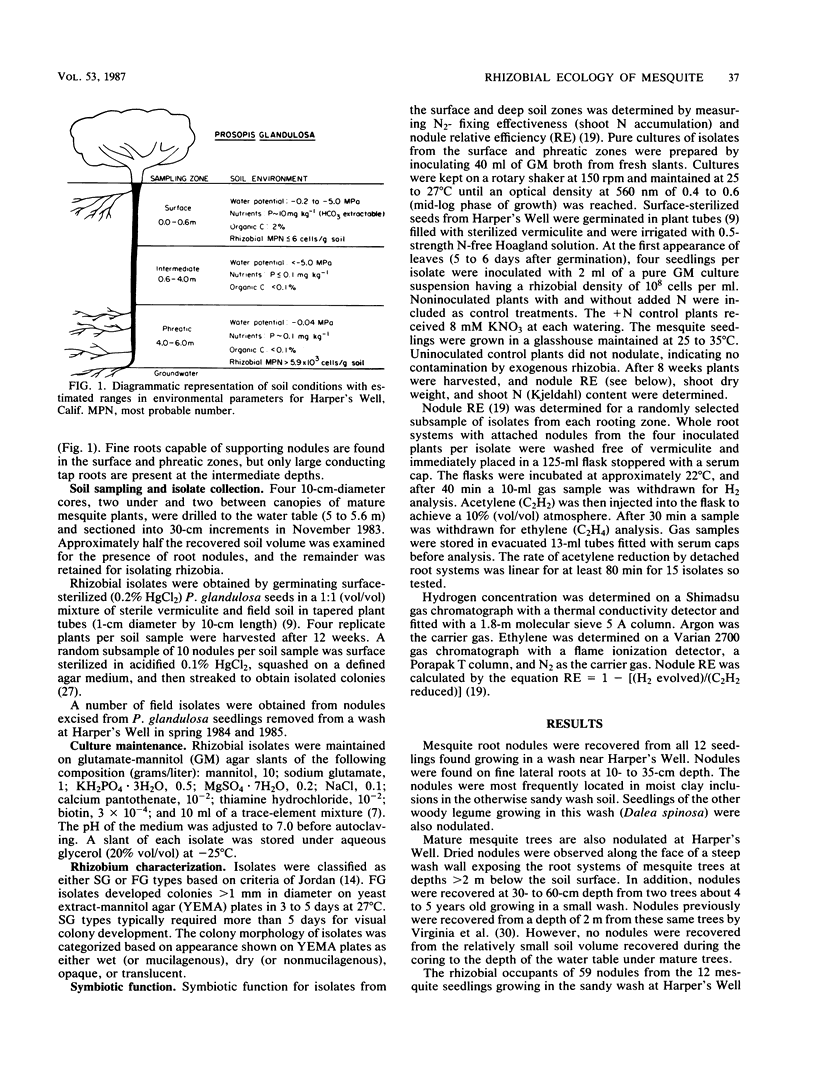
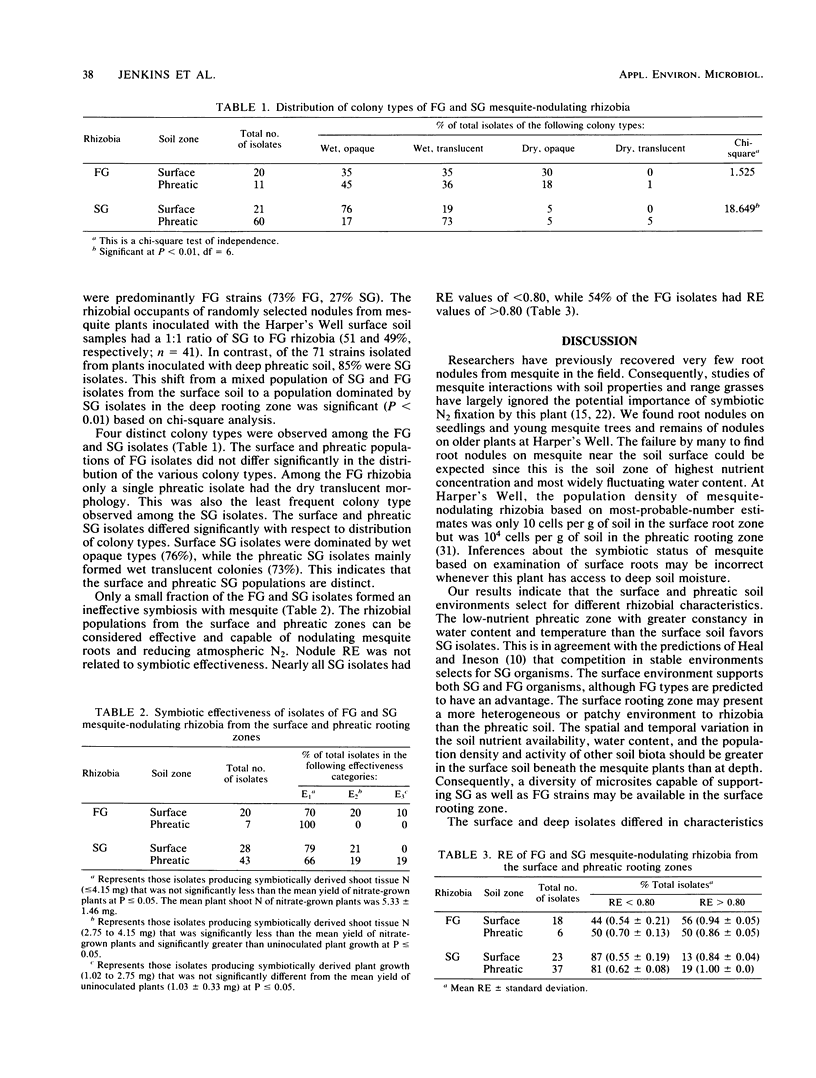
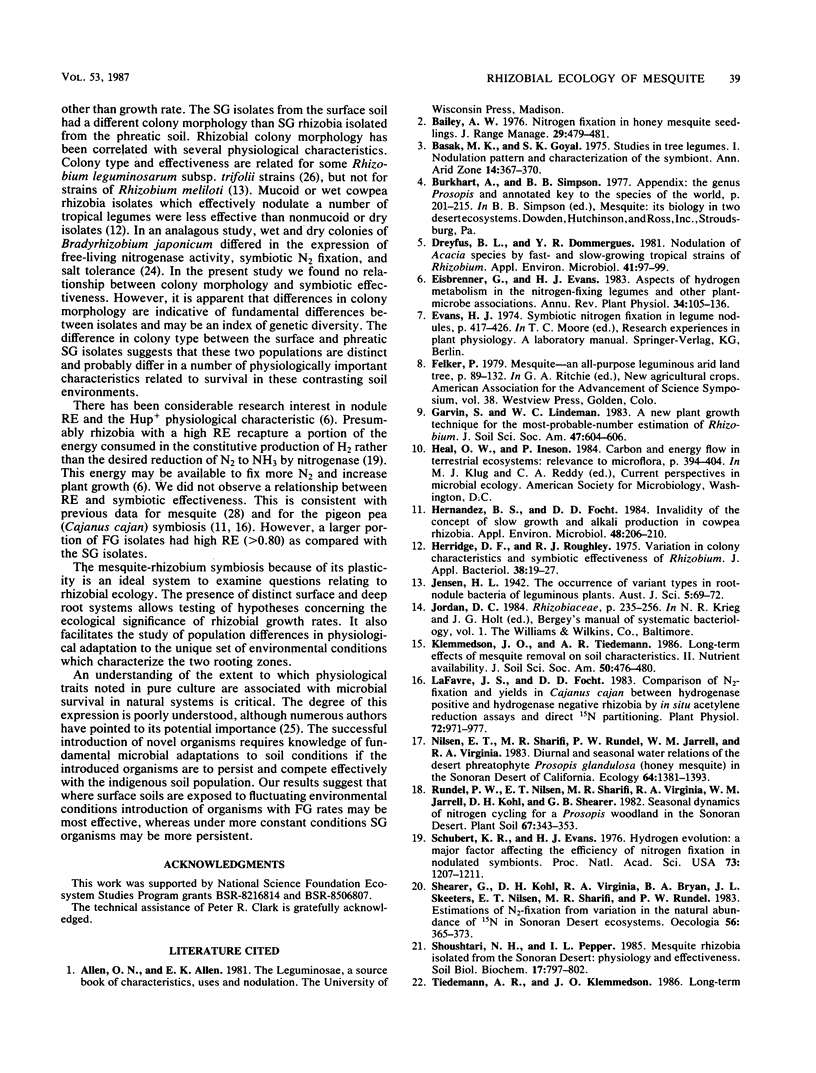
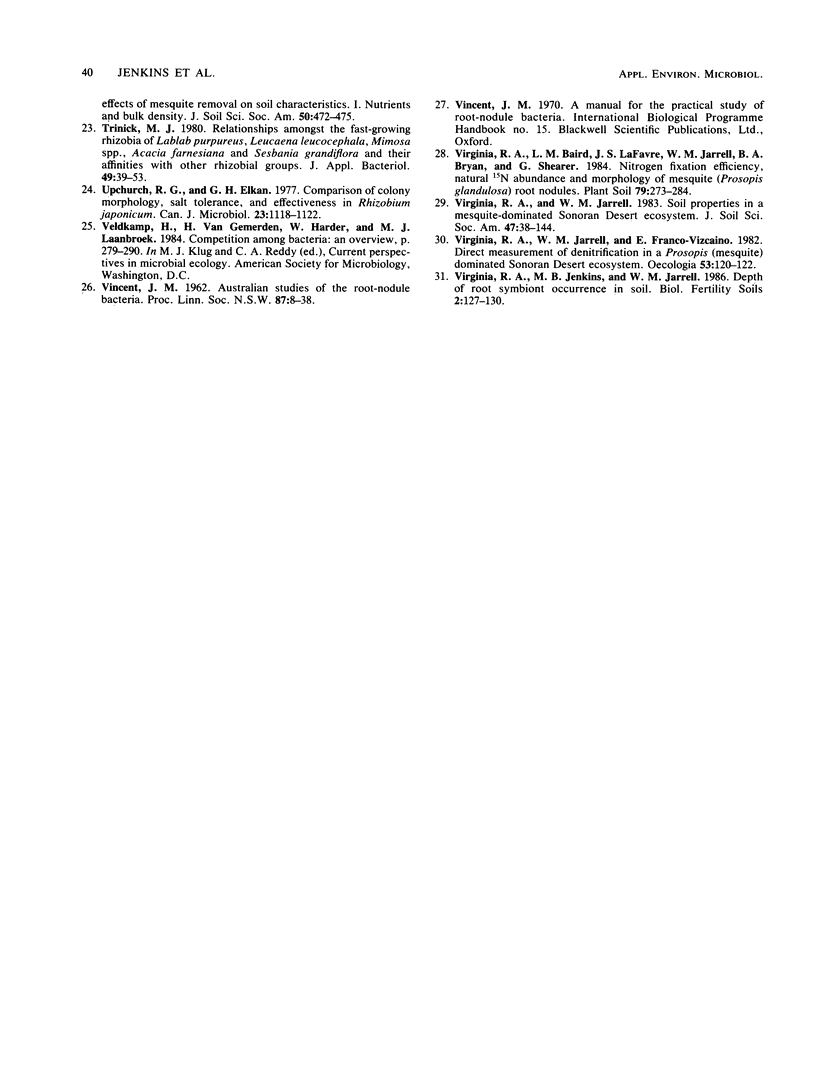
Selected References
These references are in PubMed. This may not be the complete list of references from this article.
- Dreyfus B. L., Dommergues Y. R. Nodulation of acacia species by fast- and slow-growing tropical strains of Rhizobium. Appl Environ Microbiol. 1981 Jan;41(1):97–99. doi: 10.1128/aem.41.1.97-99.1981. [DOI] [PMC free article] [PubMed] [Google Scholar]
- Hernandez B. S., Focht D. D. Invalidity of the concept of slow growth and alkali production in cowpea rhizobia. Appl Environ Microbiol. 1984 Jul;48(1):206–210. doi: 10.1128/aem.48.1.206-210.1984. [DOI] [PMC free article] [PubMed] [Google Scholar]
- Herridge D. F., Roughley R. J. Variation in colony characteristics and symbiotic effectiveness of Rhizobium. J Appl Bacteriol. 1975 Feb;38(1):19–27. doi: 10.1111/j.1365-2672.1975.tb00495.x. [DOI] [PubMed] [Google Scholar]
- La Favre J. S., Focht D. D. Comparison of N(2) Fixation and Yields in Cajanus cajan between Hydrogenase-Positive and Hydrogenase-Negative Rhizobia by In Situ Acetylene Reduction Assays and Direct N Partitioning. Plant Physiol. 1983 Aug;72(4):971–977. doi: 10.1104/pp.72.4.971. [DOI] [PMC free article] [PubMed] [Google Scholar]
- Schubert K. R., Evans H. J. Hydrogen evolution: A major factor affecting the efficiency of nitrogen fixation in nodulated symbionts. Proc Natl Acad Sci U S A. 1976 Apr;73(4):1207–1211. doi: 10.1073/pnas.73.4.1207. [DOI] [PMC free article] [PubMed] [Google Scholar]
- Upchurch R. G., Elkan G. H. Comparison of colony morphology, salt tolerance, and effectiveness in Rhizobium japonicum. Can J Microbiol. 1977 Sep;23(9):1118–1122. doi: 10.1139/m77-167. [DOI] [PubMed] [Google Scholar]


